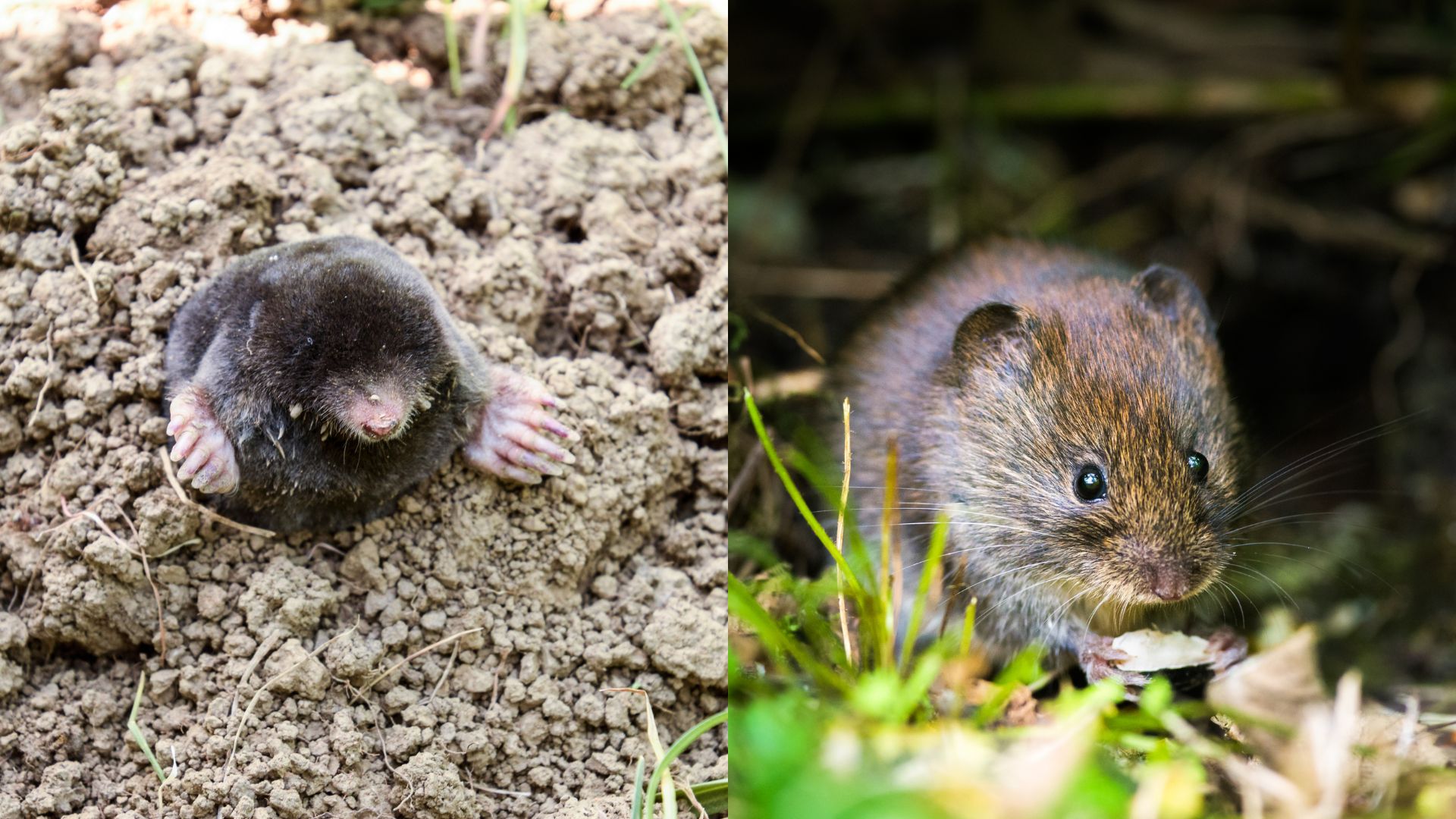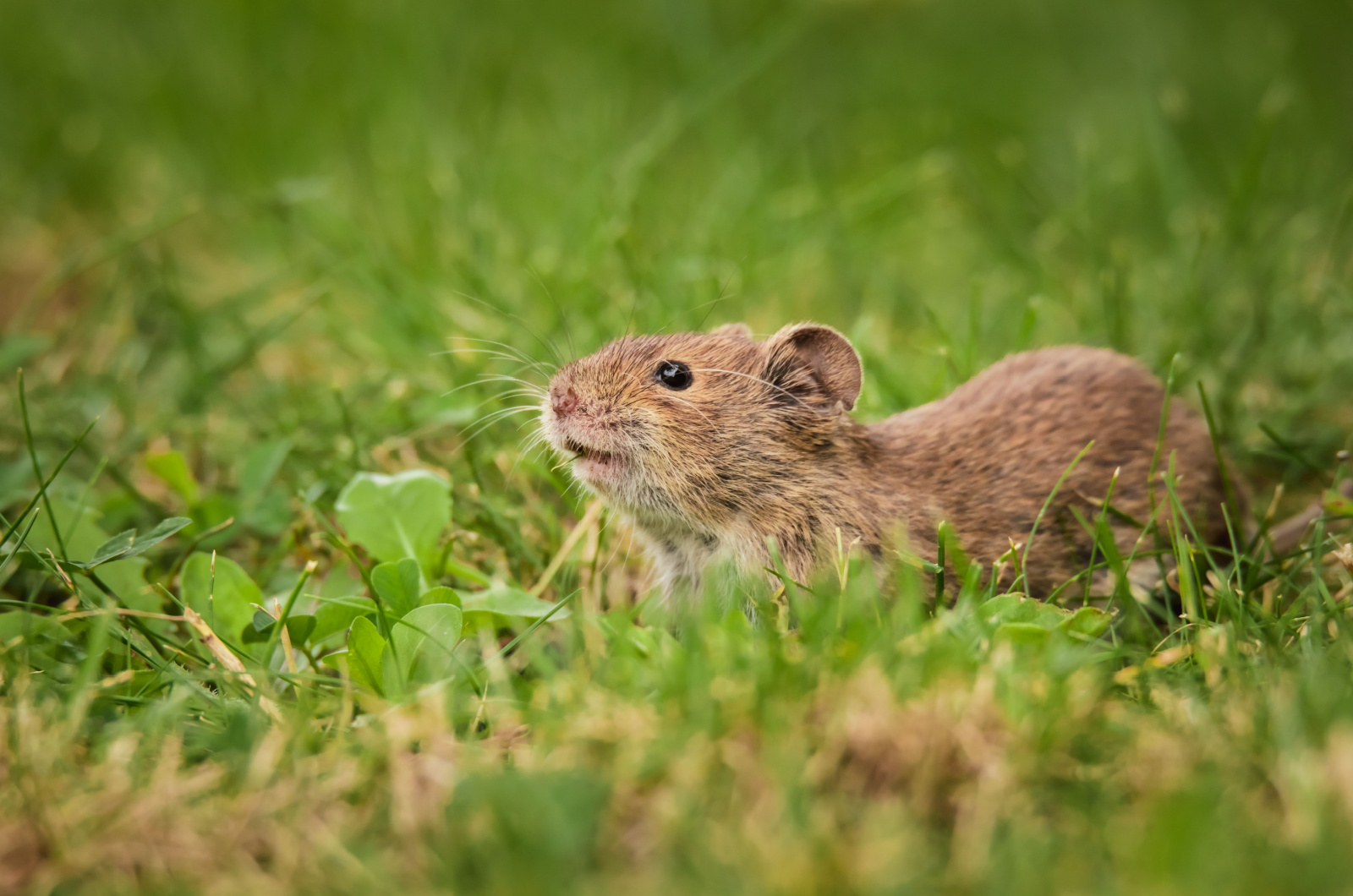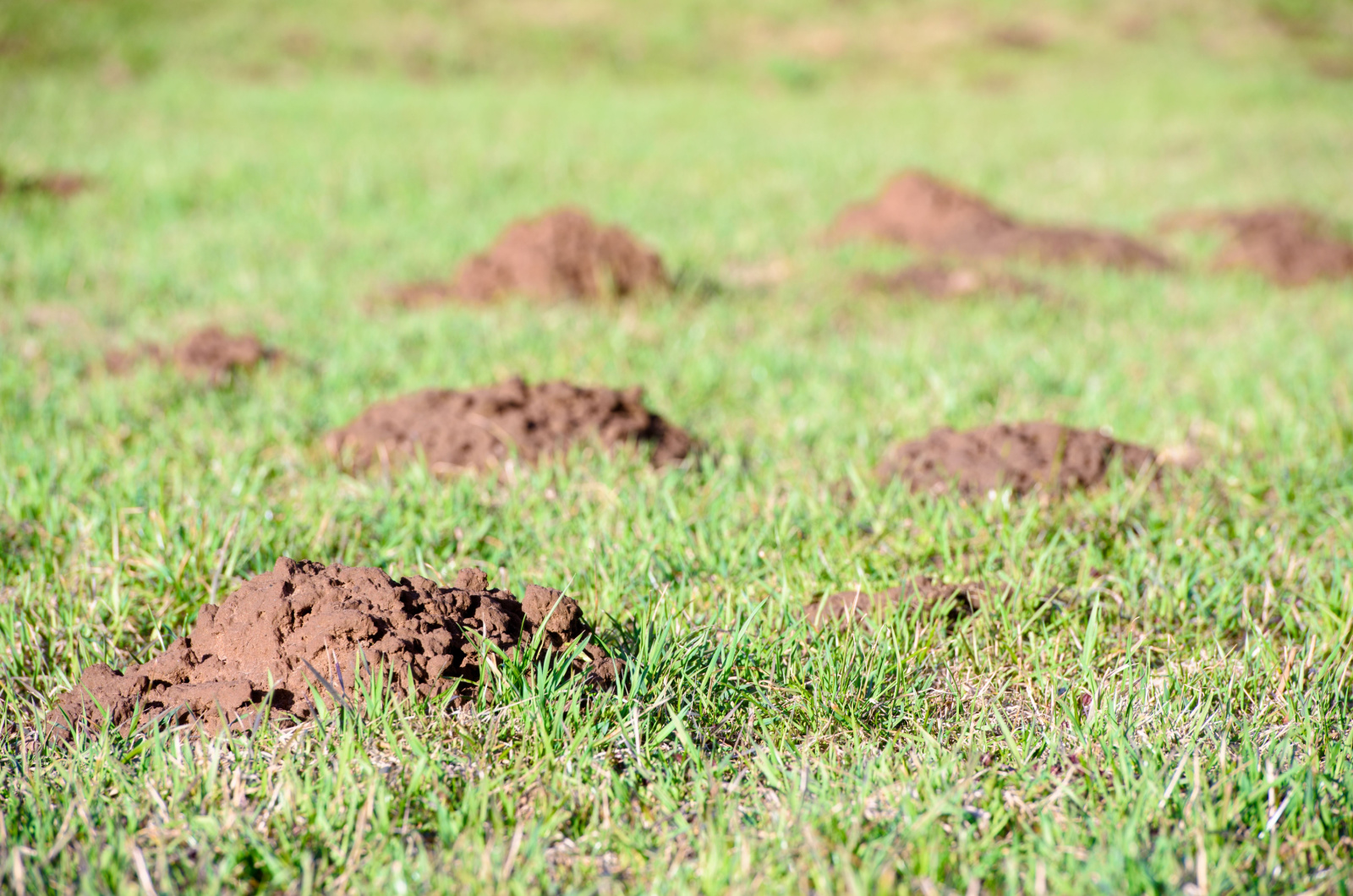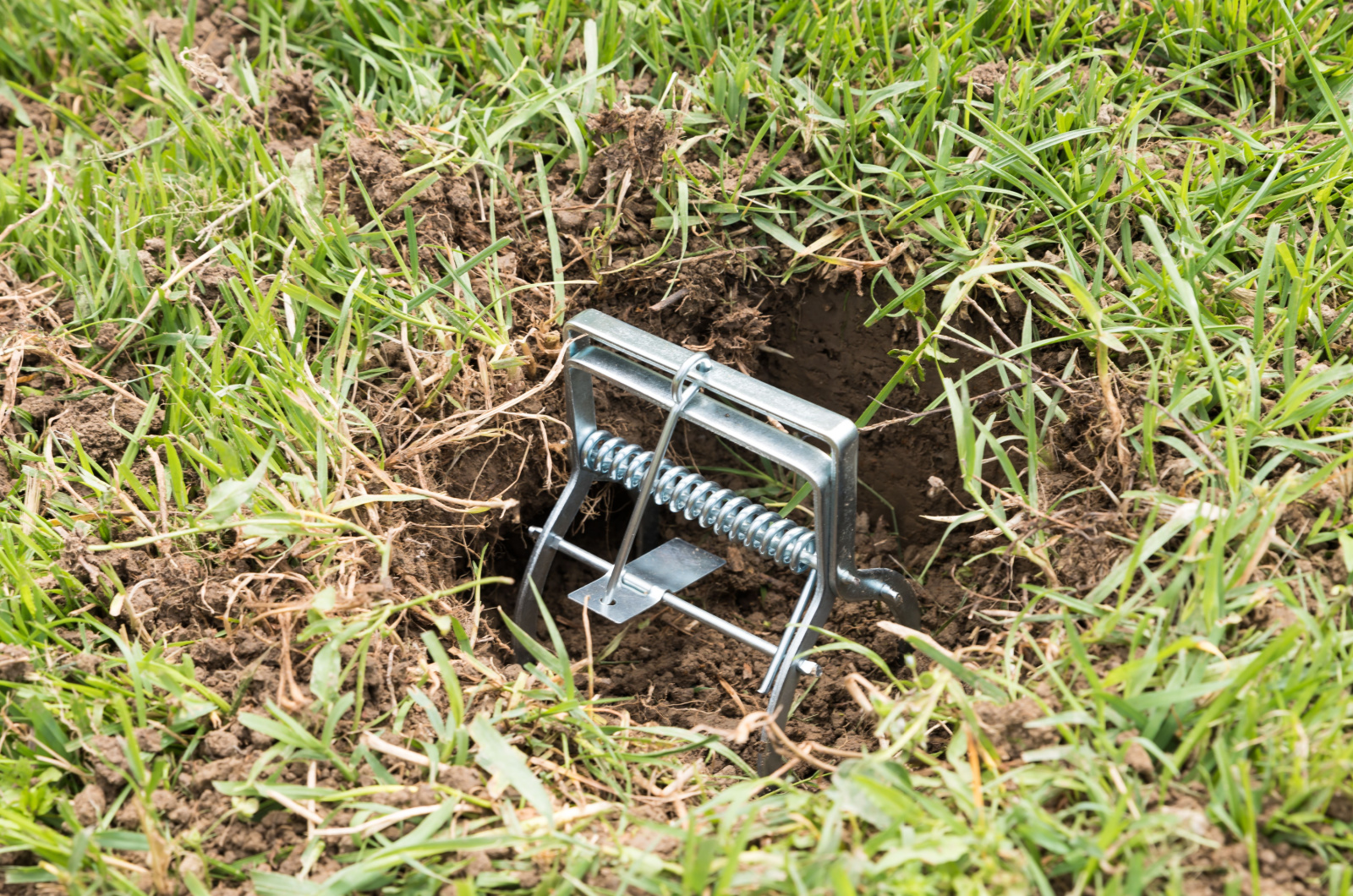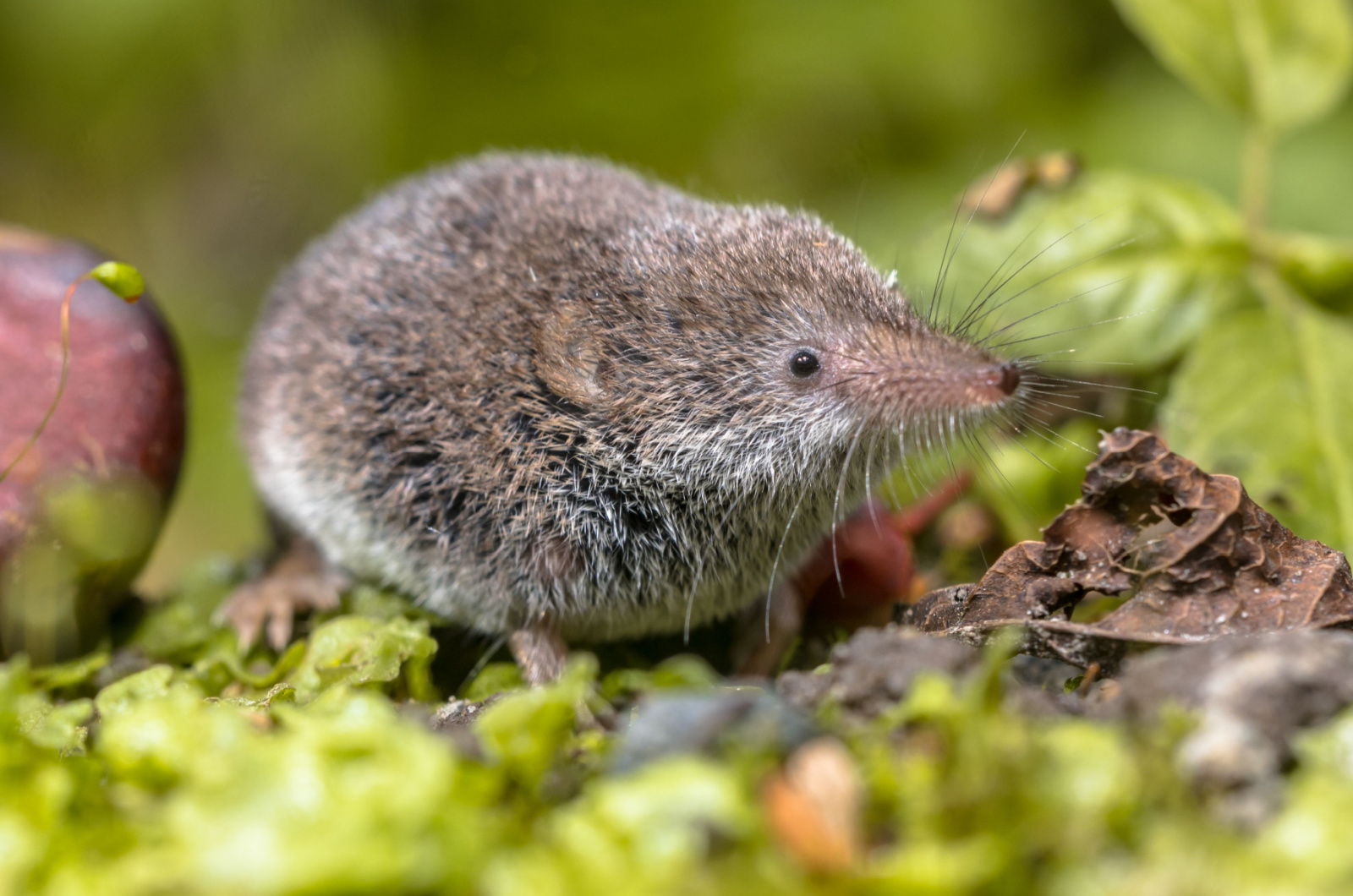Moles and voles have multiple benefits for the ecosystem but having them in our yards is far from a good thing!
These creatures can wreak havoc on lawns and only those who have had issues with moles or voles know how hard it can be to get rid of them.
Many people can’t differentiate between moles and voles. If you’re one of them, you’re in the right place to learn the difference.
I’ll also show you the damage both creatures can do to our lawns and how to prevent it.
Let’s get started!
Physical Differences Between Voles And Moles
The first thing to learn about these animals is their differences in terms of physical features.
What Do Moles Look Like?
These creatures live under the ground and their main sources of food are arthropods, such as beetle grubs and earthworms.
The fur of these animals is soft and gray and their snouts don’t have hairs. Interestingly, they have poor sight but their sense of touch is 6 times more developed than humans. (1)
Moles have clawed digits and they use them to burrow tunnels below the ground line.
The size of these creatures typically doesn’t exceed 7 inches but don’t let that fool you ‘cause the damage they can do is enormous!
What About Voles?
Voles are commonly referred to as meadow mice and they’re classified as rodents. They feature small eyes and short tails and the easiest way to recognize them is by their compact and heavy bodies. (2)
These creatures have orange teeth because they love munching on plant roots and stems (yuck).
There are several vole species and they can be found in landscapes, lawns, and even in gardens.
What Moles And Voles Do To Lawns
Both animals are really small and it can be hard to spot them when they enter your property. But the damage they leave behind can tell you if a mole or vole did it.
Let’s see more!
Mole Damage
These animals prefer a meat-based diet, and grubs and earthworms make their favorite meals. Moles are skilled diggers and, believe it or not, they can consume 100% of their body weight in grubs or earthworms every day.
If there are any volcano-shaped hills on your lawn, you might want to check for moles. They can dig a total of 150 feet of tunnels per day, making them a true nightmare for landscapes.
Moles prefer moist soils (because of earthworms) and can be found in any area with heavy ground cover.
Vole Damage
Well, these creatures prefer a plant-based diet, which means they pose a threat to all plant species found in properties.
They can burrow tunnels to reach the plant roots and will munch on the main stem above the soil line. If some small holes appear in your lawn overnight, you might want to check for voles.
Their small teeth leave irregular gnaw marks on plants and if you detect them, then you have your culprit.
How To Repel Moles And Voles
There are a few methods that can help you get rid of these animals once and for all.
Repelling Moles
Some of the most efficient mole-repelling methods include applying castor oil, installing traps, and eliminating food sources.
Traps will probably work best, especially if positioned over active tunnels. These animals are the most active when the soil is moist so make sure to inspect for them regularly.
If you eliminate only 2-3 moles, don’t be discouraged and remember that these are solitary animals, so it will make a huge difference.
Eliminating mole food sources from your lawn, such as grubs, is another option but bear in mind that it will affect other wildlife. Moles will most likely find another food source and won’t be repelled.
You can also grow some mole-repelling plants, such as daffodils or fritillaria.
Repelling Voles
If you’re having issues with voles in your garden, you should know that these animals don’t like to feed in the open. This means that you’ll need to eliminate all the things they can use as covers.
The key lies in getting rid of weeds, compact plants, and heavy mulches because they serve as both food and shelter.
If you mulch around the trees, make sure to remove it and mow your grass regularly.
You can also use traps; put some apples or peanut butter near the entry points and place a bucket over it.
How To Differentiate Moles And Voles From Shrews
If you’ve seen some animals that look similar to moles and voles but are smaller, you may be dealing with shrews.
They’re recognized for their pointed snouts and tiny eyes and their fur is either brown or gray. (3)
When compared to moles and voles, these animals won’t cause that much trouble because they don’t burrow tunnels and rarely damage plants. They prefer feeding on insects but slugs can also be on their menu.
In most cases, there’s no need to take any measures against these animals because they rarely do any damage to lawns.
Moles and voles have many things in common but it’s essential to differentiate between the two because prevention methods may not work for one or the other. Now that you know how to tell them apart, go and save your lawn!
References
1. Moles | National Wildlife Federation. (n.d.).
2. Voles (Meadow Mice) / Home and Landscape / UC Statewide IPM Program (UC IPM). (n.d.).
3. Shrew | Horticulture, Landscape, and Environmental Systems | Nebraska. (n.d.).

